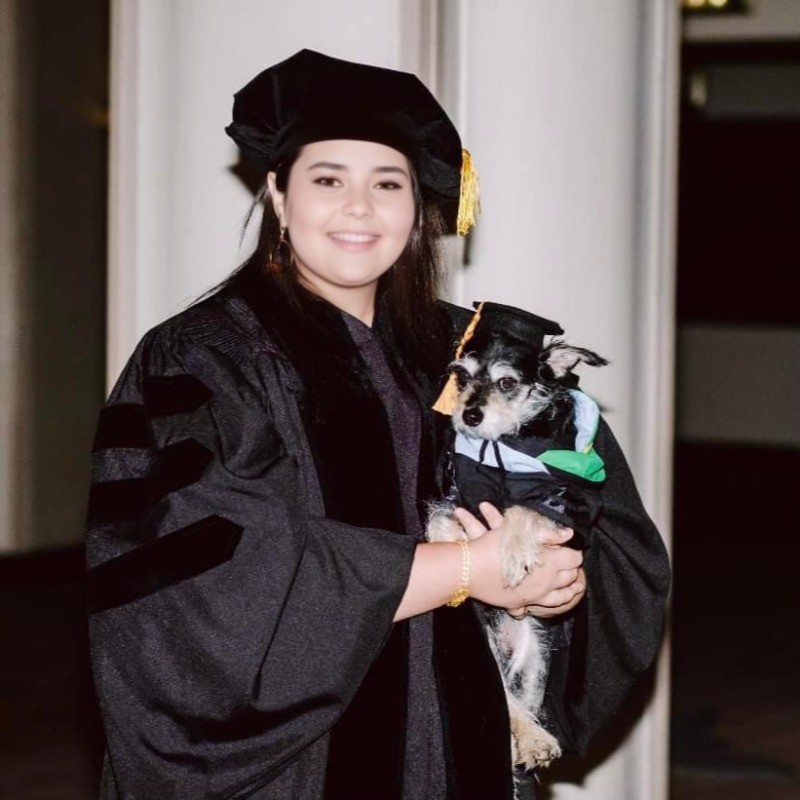The Doctor Who Framework for BRMs

A Model of Courage, Curiosity, and Connection in Business Relationship Management
“I am and always will be the optimist. The hoper of far-flung hopes, and the dreamer of improbable dreams.” — The Eleventh Doctor
This quote from the Eleventh Doctor captures something essential—not only about the beloved British sci-fi show Doctor Who, but also about the heart of Business Relationship Management (BRM). At first glance, a time-traveling alien and a strategic partner may not seem to have much in common. But both roles require navigating ambiguity, building trust, facing uncertainty with courage, and helping others move forward with hope and purpose.
If you’re unfamiliar with Doctor Who (non-Whovian), here’s a crash course. It’s a delightfully eccentric British sci-fi show that has been running (off and on) since 1963. The main character, the Doctor, is a time-traveling alien with two hearts who explores the universe in the TARDIS—a blue police box that’s bigger on the inside. Instead of using weapons, the Doctor saves planets with intelligence, empathy, and a sonic screwdriver (think futuristic Swiss Army knife). Every few years, the Doctor “regenerates” into a new version of themselves, which allows for different actors and personalities to bring fresh energy to the same central values: justice, kindness, curiosity, and hope.
This quirky universe might seem light-years away from business and industry or strategic alignment, but the Doctor and the BRM share the same core mission: helping others thrive in complex environments by building relationships, solving problems, and leading with courage.
The Dimensions of BRM: Capability, Discipline, and Role
The BRM Institute defines Business Relationship Management through three interwoven dimensions: BRM as a capability, a discipline, and a role.
As a capability, BRM encompasses the full organizational capacity—both formal and informal—to build strategic partnerships and create value. It’s the architecture behind the relationships. This is where the TARDIS (basically a space and time machine) metaphor fits perfectly: like BRM, the TARDIS appears small from the outside, but within it lies a vast, multidimensional force for impact.
As a discipline, BRM rests on standardized practices, frameworks, and a common language rooted in over a decade of research and global implementation. It’s applicable across all industries and departments, from IT and HR to finance, research, and student support. Think of it like the Doctor’s sonic screwdriver—versatile, precise, and entirely dependent on the wisdom of the person wielding it.
As a role, the BRM becomes the bridge between business needs and solutions. Like the Doctor’s companions, Clara, Rose, Donna, Martha, Yaz, the BRM listens deeply, translates across functions, challenges assumptions, and helps others see possibilities they hadn’t imagined. The BRM role is never just about the transaction. It’s about transformation.
Tradition Meets Transformation
This captures something essential about the BRM role, especially within the context of higher education. Universities and colleges are steeped in tradition and structured systems. That legacy is meaningful—but it can also become a barrier to change. BRMs are not here to undo the past. We’re here to ensure our institutions grow in ways that honor the past while embracing the future.
BRMs are the quiet invitation to choose what comes next. We help others identify what still serves us and have the courage to release what no longer fits. That’s not abandonment. That’s evolution. Just as the Doctor regenerates into new forms while remaining rooted in timeless values, BRMs help institutions reimagine themselves without losing their purpose. We support faculty, staff, and leadership through transitions—not just by offering solutions, but by walking alongside them as they define the future.
The Four Pillars of BRM and Their Doctor Who Parallels
The BRM discipline stands on four pillars: evolve culture, build partnerships, drive value, and satisfy purpose. Each of these aligns powerfully with themes from Doctor Who.
Evolve Culture
To evolve culture is to embrace renewal. As the Second Doctor once said, “Life depends on change, and renewal.” BRMs help organizations shed outdated norms while reinforcing values that matter. We don’t force change—we foster it, modeling the behaviors and beliefs that will guide a more agile, inclusive culture.
Build Partnerships
To build partnerships, BRMs invest in trust. The Tenth Doctor once declared, “You want weapons? We’re in a library! Books! The best weapons in the world!” The Doctor doesn’t win through might or force but through alliances…even with former enemies. BRMs do the same. We seek to understand the perspectives of others and bring together teams that might never collaborate otherwise, and we help create shared vision from fragmented priorities.
Drive Value
To drive value, BRMs align needs with capabilities. The Eleventh Doctor offers this reflection: “The universe is big. It’s vast and complicated and ridiculous. And sometimes, very rarely, impossible things just happen and we call them miracles.” BRMs are not miracle-workers, but we do make the improbable possible by connecting the dots between strategy, people, and process to deliver measurable outcomes that truly matter.
Satisfy Purpose
To satisfy purpose means aligning actions with the organization’s deeper mission. The Twelfth Doctor reminds us, “Never be cruel, never be cowardly. Hate is always foolish, and love is always wise.” BRMs make sure the work we do—no matter how technical, administrative, or invisible—contributes to something larger: a stronger institution, a better student experience, or more empowered researchers.
The Model of Courage, Change, and Growth
The BRM Competency Model, as defined by the BRM Institute, aligns seamlessly with Doctor Who’s core themes of courage and transformation. The model emphasizes growth through experience, mindset, and value creation. Like the Doctor, the BRM evolves through each challenge.
Courage is essential. BRMs must often speak difficult truths, advocate for change, and move forward despite not knowing all the answers. “Courage isn’t just a matter of not being frightened, you know. It’s being afraid and doing what you have to do anyway,” said the Third Doctor. BRMs don’t wait for perfect clarity, they act with integrity in the face of uncertainty.
Change is central. “We all change, when you think about it. We’re all different people all through our lives. And that’s OK. That’s good,” said the Eleventh Doctor. The Competency Model outlines four evolving stages: Explorer, Beginner, Practitioner, and Master. BRMs develop deeper self-awareness and strategic influence as they move through each phase. We don’t shed who we were; we carry it forward, wiser each time.
Curiosity and kindness fuel that growth. The Doctor’s signature approach—“Let’s go poke it with a stick”—echoes the BRM’s relentless drive to understand systems, explore needs, and challenge assumptions. BRMs are encouraged to shape demand and spot opportunity, often in places no one thought to look.
Kindness, too, is a guiding principle. As the Thirteenth Doctor advises, “Try your best, even if no one thanks you, even if no one is watching or praising you for it… Especially if it is hard and costs you sacrifices.” That is the core of BRM: doing the right thing, not because it’s easy or acknowledged, but because someone has to care enough to connect the dots.
Ripples of Change: Navigating Uncertainty
“Every great decision creates ripples, like a huge boulder dropped in a lake,” said the Seventh Doctor. And it’s true. Every project reimagined, every policy questioned, every conversation initiated sends ripples across the organization.
Some changes are welcomed with open arms. Others spark discomfort or resistance. But all movement matters. The role of the BRM is not to predict every outcome—but to act with purpose, hold space for change, and guide others with empathy and accountability as the ripples unfold.
High-Performing BRM Teams & the TARDIS Crew Effect
The best BRM teams resemble the Doctor’s finest TARDIS crews. They anticipate needs rather than react to problems, and they translate between cultures, functions, and domains. They build trust not through authority, but through consistency, listening, and integrity.
They also bring certified expertise to the table (BRMPs and CBRMs), who demonstrate mastery in both theory and practice. But titles aren’t what make them effective. It’s the mindset: compassionate, curious, and strategic. These are the people who make others feel safer navigating complexity.
Looking Ahead with the Optimist’s Energy
So yes, I’ll continue to be the optimist in the room. I’ll keep hoping far-flung hopes—that researchers feel supported and empowered, that student-facing systems are built for inclusion, and that our digital strategies reflect the values and voices of everyone in the institution. I’ll keep dreaming those improbable dreams—that silos dissolve, that collaboration deepens, and that alignment becomes something we live, not just something we talk about.
“The way I see it, every life is a pile of good things and bad things. The good things don’t always soften the bad things… but the bad things don’t always spoil the good things or make them unimportant.” — The Eleventh Doctor
That’s the energy I’m carrying into year two of this role. Because if there’s one thing this journey has taught me, it’s this: improbable doesn’t mean impossible. It just means someone has to believe in it first.
About the Author
Dr. Jericha Hopson is the IT Business Relationship Manager for Research at Tarleton State University, where she drives strategic partnerships between researchers and technology teams. Passionate about innovation and collaboration, she leverages over a decade of experience in higher education to enhance research outcomes and foster digital transformation. Life-long Whovian!

